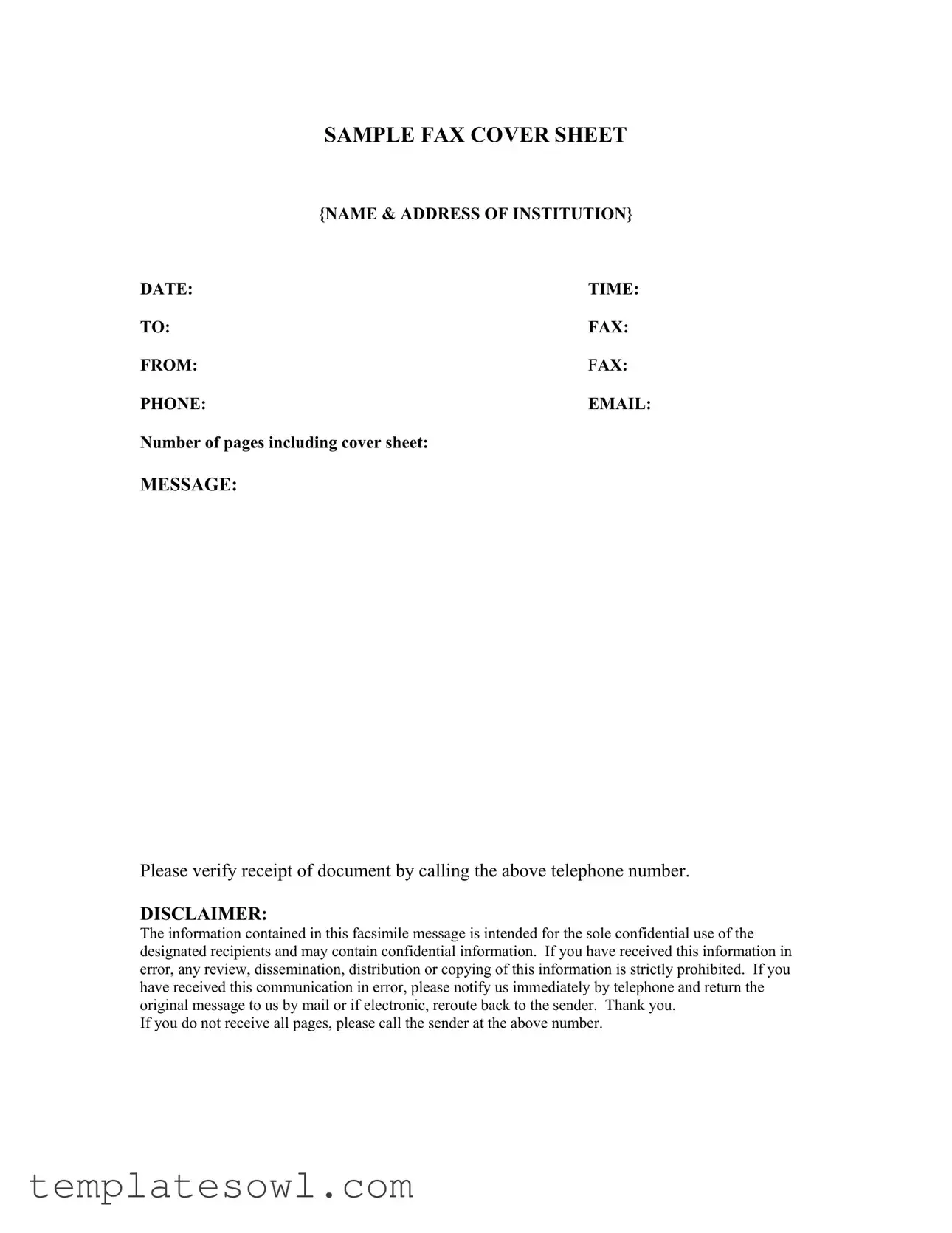What is a Sample Fax Cover form used for?
The Sample Fax Cover form is designed to provide essential information when sending a fax. It includes details such as the sender's and recipient's names, addresses, and contact information. The cover sheet helps ensure that the fax is directed to the correct person and serves as a brief overview of the contents being sent.
What information should be included on the Fax Cover form?
Standard information includes the date, time, recipient’s name, recipient’s fax number, sender’s name, sender’s fax number, phone number, email address, the number of pages being sent, and a space for an additional message. Filling out this information accurately can help prevent any miscommunication during the faxing process.
Why is it important to verify receipt of a fax?
Verifying receipt of a fax is important to confirm that the document has been successfully delivered to the intended recipient. This step ensures that critical information has not been lost and allows the sender to address any issues promptly, should the recipient not receive the fax as intended.
What should I do if I receive a fax that is not meant for me?
If you receive a fax that you believe is intended for someone else, it is crucial to avoid reviewing, disseminating, or copying the information. Instead, you should notify the sender immediately by phone. Additionally, return the original message to the sender by mail or, if received electronically, reroute it back to the sender.
How many pages should I indicate on the Fax Cover form?
You should indicate the total number of pages being sent, which includes the cover sheet itself. This helps the recipient know how many pages they should expect, ensuring they can report any missing pages accurately.
What is the purpose of the disclaimer on the Fax Cover form?
The disclaimer serves to protect the confidentiality of the information being sent. It informs the recipient that the contents of the fax are intended solely for them and that unauthorized use is strictly prohibited. The disclaimer also provides instructions for how to handle the fax if received in error, emphasizing the importance of privacy and proper communication protocols.
Can I use the Fax Cover form for any type of documents?
Yes, the Fax Cover form can be used for various types of documents, including contracts, reports, and correspondence. However, it is essential that the documents being faxed comply with any applicable legal or regulatory requirements, especially when dealing with sensitive information.
Is there a specific format I should follow when filling out the Fax Cover form?
While there is no strict format that must be followed, it is advisable to fill out the form clearly and legibly. Using standard fonts and sizes helps maintain professionalism. Ensure that all fields are completed accurately to facilitate effective communication and service.
